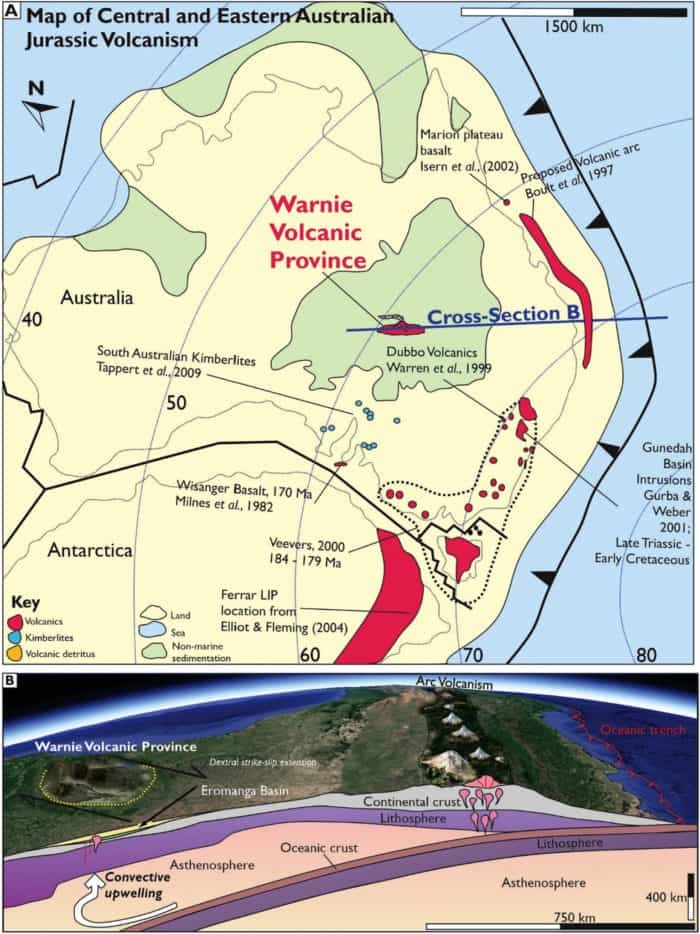Ancient volcanoes discovered in central Australia

SCIENTISTS HAVE discovered what they describe as a ‘Jurassic World’ of volcanoes in the Cooper and Eromanga basins of central Australia.
This set of ancient volcanoes are between 130 to 170 million years older than those previously found along the Cosgrove hotspot track discovered in 2015, which extends from Cape Hillsborough in Queensland to Cosgrove in Victoria.
Read more: Explore Victoria’s volcanoes
Almost 100 volcanoes, dating back between 180 and 160 million years ago, were detected using seismic reflection methods, reported in the journal Gondwana Research, an approach borrowed from the oil and gas exploration industries.
“We essentially create soundwaves that are sent downwards from the Earth’s surface,” says Adelaide University geologist Simon Hollford, who co-authored the study with geologists from the University of Aberdeen in Scotland.
“When these soundwaves encounter a boundary between different sedimentary rock types, some of the soundwave is bounced back to the Earth’s surface, where it is recorded and used to create a highly detailed image of the subsurface.”

Location map of the Warnie Volcanic Province and the data available. (Supplied)

A Palaeogeographic map of Australia in the middle Jurassic (Oxfordian, 160 Ma), superimposed with the location of middle to late Jurassic volcanics in eastern Australia. (Supplied)
According to Simon, these volcanoes are very similar to the comparatively very young volcanoes in the southeast of South Australia, such as Mount Gambier.
“They mostly have very well-developed cone-like morphologies, and many of them fed lava flows that travelled kilometres away from the volcanoes,” he says.
“During the time of volcanic activity there would have been a landscape of craters and fissures, spewing hot ash and lava into the air. You’d be running away when it was going off!”
Simon compares what these volcanoes would have been like when active to the Kamoamoa fissure eruption seen here.
Millions of years ago, at the beginning of the volcanic activity, the Cooper and Eromanga basins, located in the north-eastern corner of South Australia and south-western corner of Queensland, would have featured large braided rivers.
Near the end of the activity, however, large lakes and coal-swamps dotted the area. “Both very different to the dry and barren landscape today,” Simon says.
The newly discovered volcanoes have been dubbed the ‘Warnie Volcanic Province’, to honour the role cricket played in the collaboration between the University of Adelaide and the University of Aberdeen.
“We wrote much of the paper during a visit to Adelaide by the Aberdeen researchers. A fair chunk was discussed and written at Adelaide Oval during an England vs Cricket Australia XI match in November 2017,” they say.
“Inspired by the cricket, we thought Warnie a good name for this once fiery region.”
Future research, Simon says, should focus on answering the question of exactly how extensive this province of Jurassic volcanoes really is.

